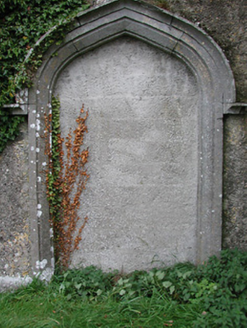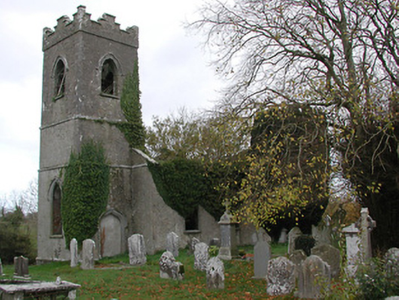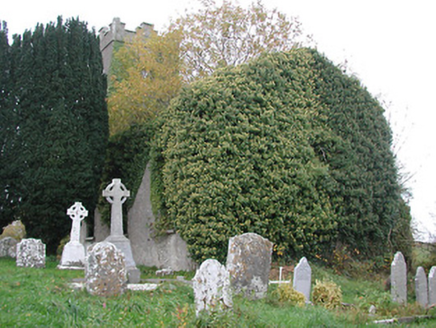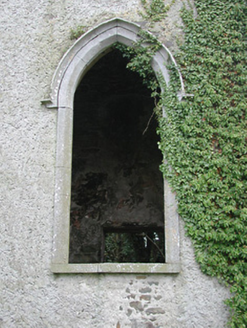Survey Data
Reg No
12401301
Rating
Regional
Categories of Special Interest
Architectural, Artistic, Historical, Social
Original Use
Church/chapel
Date
1790 - 1810
Coordinates
241741, 159771
Date Recorded
01/01/2005
Date Updated
--/--/--
Description
Detached three-bay single-storey single-cell Board of First Fruits Church of Ireland church, c.1800, with single-bay three-stage entrance tower to west on a square plan. In use, 1902. Now in ruins. Pitched roof now gone with cut-limestone coping to gables, and no rainwater goods surviving on ivy-clad cut-limestone eaves. Roof to tower not visible behind parapet (presumed now gone). Unpainted rendered walls over random rubble stone construction with cut-limestone surround to gable to west, cut-limestone stringcourse to each stage to tower, and crow-stepped battlemented advanced parapet having cut-limestone coping. Pointed-arch openings (including to top (bell) stage to tower) with cut-limestone sills, cut-limestone surrounds (having chamfered reveals to first stage to tower; no surrounds to top (bell) stage), hood mouldings over, and fittings now missing. Tudor-headed door opening with carved cut-limestone surround having chamfered reveals, and hood moulding over (now blocked-up with unpainted render over). Set back from road in own grounds with unpainted roughcast piers over random rubble stone construction having cut-limestone capping, and iron gate. (ii) Graveyard to site with various cut-stone markers, c.1800-post-1902.
Appraisal
A pleasant modest-scale rural church conforming to a standard arrangement of nave and tower associated with churches sponsored by the Board of First Fruits (fl. 1711-1833). Having fallen into an advanced state of disrepair following a prolonged period of disuse the church survives as a picturesque landmark of some Romantic quality in the landscape with an attendant graveyard containing markers of artistic design importance enhancing the group and setting values of the site. The church remains a particularly important element of the architectural heritage on account of the status as a reminder of the once-prosperous Church of Ireland community in the locality.







